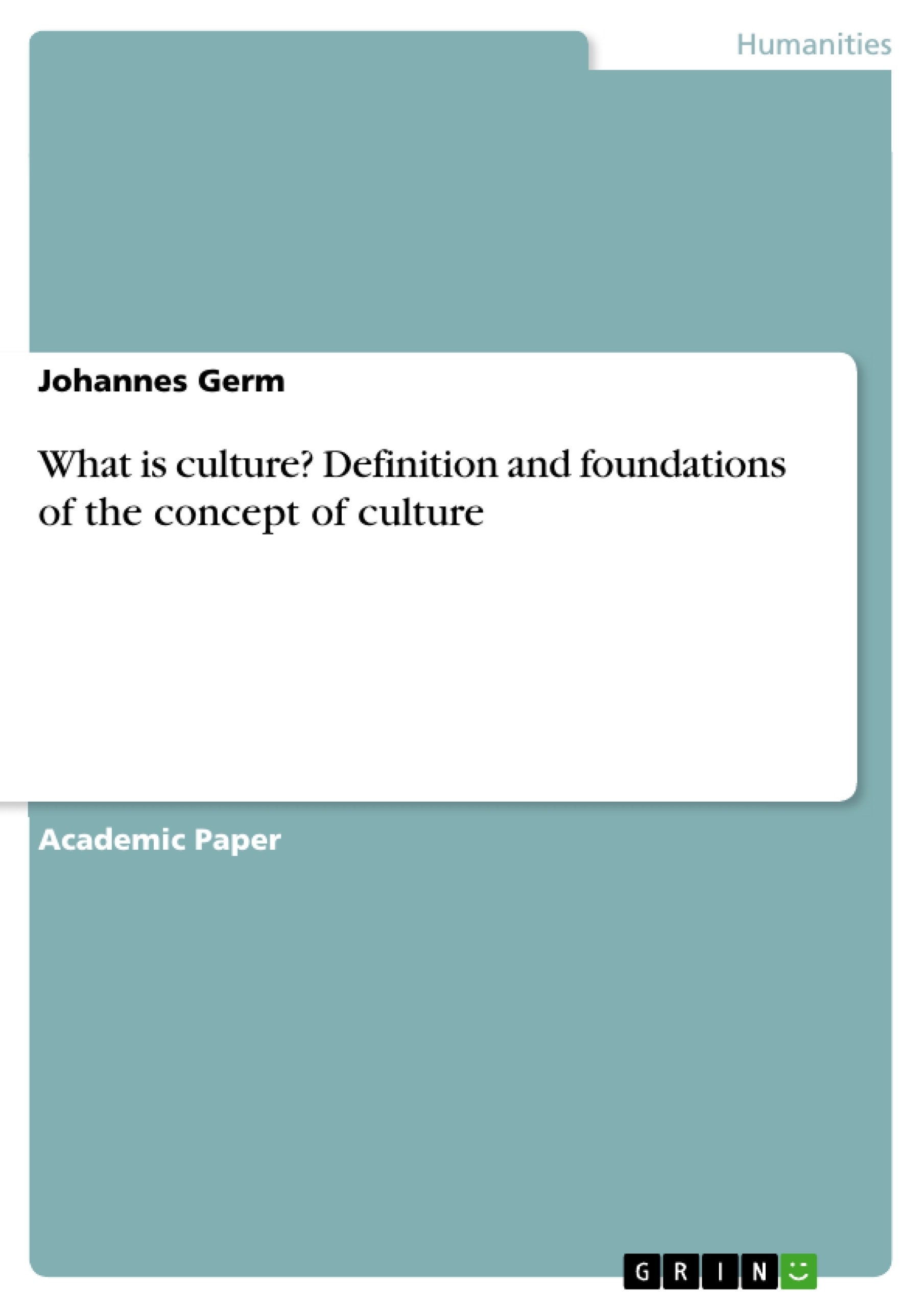This paper presents the relevant theoretical foundations of the concept of culture. Culture is the result of human actions and at the same time has a direct impact on human actions. Thus, a situation or action can be interpreted differently by two people with different cultural backgrounds due to the influence of culture. In order to become aware of these different interpretations, however, it is first necessary to understand what "culture" is.
Table of Contents
- 1. Definitions of culture
- 2. Cultural Programming
- 3. Values as the Core of Culture
- 4. Culture and Meaning
- 5. Culture and Communication
- 6. Cultural Boundaries
- 7. Cultural Distinctness
- 7.1. Hofstede's Four Cultural Dimensions
- 7.2. Culture Standards and Their Function in Culture Assimilators
- 7.3. Criticism of Hofstede's Investigation
Objectives and Key Themes
This work aims to establish a foundational understanding of the concept of culture by exploring its various definitions and key aspects. It seeks to clarify the relationship between culture and human action, highlighting the impact of cultural background on individual interpretation and communication.
- Defining Culture: Exploring diverse definitions and perspectives on culture, addressing the lack of a universally accepted definition.
- Culture's Influence on Action: Analyzing how cultural background shapes individual perceptions, interpretations, and actions.
- Culture and Communication: Investigating the role of culture in communication processes and potential misunderstandings stemming from differing cultural backgrounds.
- Cultural Boundaries and Distinctness: Examining the concept of cultural boundaries, distinctness, and the challenges of intercultural understanding.
- Cultural Values: Exploring the importance of values as the core component of culture and their impact on behavior and interactions.
Chapter Summaries
1. Definitions of culture: This chapter tackles the inherent difficulty in defining "culture," highlighting the absence of a universally accepted definition within scientific literature. It explores numerous broad and narrow definitions, showcasing the diverse perspectives across different research fields. The chapter prominently features Kroeber and Kluckhohn's comprehensive definition, emphasizing culture as both a product and a conditioning element of human action, influencing perception, thought, and evaluation. The concept of Schutz's "living world" is introduced, illustrating how shared cultural realities shape individual actions and interpretations. The chapter concludes by rejecting definitions equating culture with nations or geographical areas, emphasizing the limitations of overgeneralizations and stereotypes.
Frequently Asked Questions: A Comprehensive Language Preview
What is the overall focus of this document?
This document provides a comprehensive preview of a work focused on understanding the concept of culture. It covers definitions, key themes, chapter summaries, and keywords, offering a structured overview of the subject matter for academic use.
What topics are covered in the Table of Contents?
The Table of Contents includes chapters on definitions of culture, cultural programming, values as the core of culture, culture and meaning, culture and communication, cultural boundaries, and cultural distinctness (including Hofstede's cultural dimensions, culture standards, and criticisms of Hofstede's work).
What are the main objectives and key themes explored?
The main objectives are to establish a foundational understanding of culture, clarify the relationship between culture and human action, and highlight the impact of cultural background on individual interpretation and communication. Key themes include defining culture, culture's influence on action, culture and communication, cultural boundaries and distinctness, and the role of cultural values.
What does the chapter on "Definitions of Culture" cover?
This chapter addresses the difficulty in defining "culture," highlighting the lack of a universally accepted definition. It explores various definitions, features Kroeber and Kluckhohn's definition, introduces Schutz's "living world" concept, and rejects definitions equating culture with nations or geographical areas.
What other chapter summaries are provided?
While only the summary for "Definitions of Culture" is explicitly shown in the provided HTML, the preview indicates that summaries for all chapters listed in the table of contents are included in the full document.
Who is the intended audience for this preview?
The preview is intended for academic use, suggesting the target audience is likely students or researchers interested in the study of culture.
Where can I find the full text?
The provided HTML is only a preview. The location of the complete text is not specified in this preview.
What is the purpose of this preview?
This preview serves as a concise and structured overview of the complete work, allowing potential readers to quickly grasp its scope and content before accessing the full text. It facilitates efficient navigation and understanding of the key concepts and arguments presented in the larger work.
- Quote paper
- Magister Artium Johannes Germ (Author), 2006, What is culture? Definition and foundations of the concept of culture, Munich, GRIN Verlag, https://www.grin.com/document/1169797




